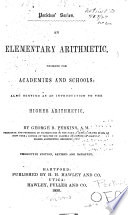 | George Roberts Perkins - Arithmetic - 1850 - 364 pages
...improper fractions, and cornpound fractions to their simplest form. Then multiply each numerator by all the denominators except its own for a new numerator, and all the denominators together for a common denominator. Repeat tins Rule. EXAMPLES. 1. Reduce -J-, -J-,... | |
 | Benjamin Greenleaf - Arithmetic - 1851 - 372 pages
...the respectice numerators of the fractions and their products will be the numerators required. Or, multiply each numerator into all the denominators except its own for a nno numerator ; and all the denominators into each other for a common denominator, Questions to be... | |
 | George Roberts Perkins - Arithmetic - 1851 - 356 pages
...improper fractions, and compound fractions to their simplest form. Then multiply each numerator by all the denominators except its own for a new numerator, and all the denominators together for a common denominator. Bepeat this Rule. EXAMPLES. 1. Reduce £-, i, -f... | |
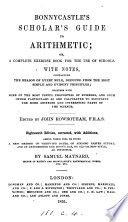 | John Bonnycastle - 1851 - 314 pages
...reduce them to simple fractions by the former rules. Then multiply each numerator of these fractions by all the denominators, except its own, for a new numerator, and all the denominators together for a common denominator. EXAMPLES. (1.) Reduce ^, §, and ^ to equivalent... | |
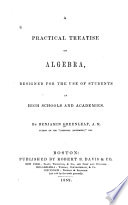 | Benjamin Greenleaf - Algebra - 1852 - 348 pages
...Reduce 2 to a simple fraction. Ans. CASE VI. 121. To reduce fractions to a common denominator. RULE. Multiply each numerator into all the denominators except its own for a new numerator, and all the denominators into each other for a common denominator; or find the least common multiple of all... | |
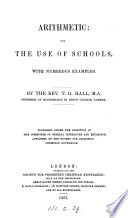 | Thomas Grainger Hall - 1853 - 268 pages
...,5-20 Ï2 = 72; and IS" 72' product, and we may use the following Rule. Multiply each numerator by all the denominators, except its own, for a new numerator, and all the denominators together, for a common denominator. Ex. (58.) Reduce -, -, -, =, to fractions having... | |
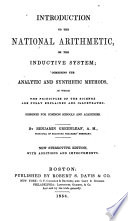 | Benjamin Greenleaf - 1854 - 342 pages
...and denominator of a fraction by the same number does not alter the value of the fraction. RULE. — Multiply each numerator into all the denominators except its own for a new numerator; and all the denominators into each other for a common denominator. NOTE. — Fractions of this form may often... | |
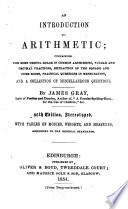 | James Gray - Arithmetic - 1854 - 120 pages
...S^j to a simple fraction. Ans. f •$. PROB. 5. To reduce fractions to a common denominator. RULE. Multiply each numerator into all the denominators, except its own, for a new numerator ; and multiply all the denominators together for a common denominator. NOTE. Fractions may often be reduced... | |
 | Barnard Smith - Arithmetic - 1854 - 368 pages
...the denominator of each fraction. Note 2. If the denominators have no common measure, we must then multiply each numerator into all the denominators, except its own, for a new numerator for each fraction, and all the denominators together for the common denominator. Ex. Reduce \, ?, J,... | |
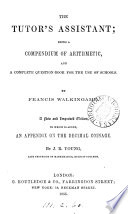 | Francis Walkingame - 1855 - 186 pages
...Ц, Щ, W, &cREDUCTION OF VULGAR FRACTIONS. 1. To reduce fractions to a common denominator. KULE 1. Multiply each numerator into all the denominators, except its own, for a new numerator; and multiply all the denominators together for a common denominator. Or, 2. Multiply the common denominator... | |
| |